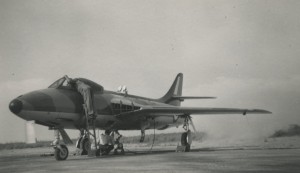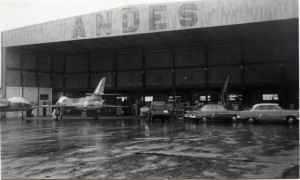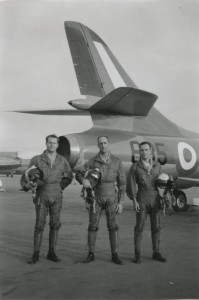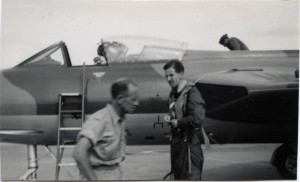Bell apresenta atualizações no 412 EPI
March 8, 2013
As novidades foram apresentadas durante a Heli-Expo 2013 em Las Vegas (EUA).
São Paulo, 05 de março de 2013 – A Bell, representada exclusivamente no Brasil pela TAM Aviação Executiva – anunciou atualizações para um dos modelos de helicópteros mais versáteis da empresa, o Bell 412. Dessa forma, o modelo, agora denominado 412EPI, passa a ter o novo painel Glass Cockpit Bell BasiX Pro, que fornece informações muito importantes sobre o voo propiciando ainda maior consciência situacional e segurança. Equipado com dois motores Pratt & Whitney PT6T-9 Twin Pac®, e com o novo sistema BLR Strake and FastFin (que modifica a região do rotor de cauda) o helicóptero teve sua capacidade de carga aumentada em 1400 lbs (636 kg) melhorando a performance em climas quentes, e está exposto na Heli-Expo 2013, em Las Vegas (EUA).
“Os benefícios das atualizações no painel foram testados no Bell 429 e agora podemos oferecer aos clientes do Bell 412 a capacidade de realizar aproximações WAAS, um indicador de Situação de Potencia (PSI), cálculos de performance exibidos nas telas, e uma interface via touchscreen através do GPS Garmin GTN-750. O Bell 412EPI é um modelo ideal para o setor de exploração de óleo e gás e também para qualquer missão que exija potência e desempenho”, ressalta Danny Maldonado, vice-presidente de vendas e marketing da Bell Helicopter.
Os novos motores do Bell 412 EPI proporcionam uma potência 15% maior do que o Bell 412 EP. O seu novo painel oferece quatro telas de LCD de alta resolução com todas as informações vitais para o voo exibidas em um modo de fácil visualização. O sistema é projetado especificamente para atender os requisitos de helicópteros bimotores e é otimizado para operações IFR e Categoria A. Além disto inclui mapas digitais de alta resolução, cartas aeronáuticas, e HTAWS (opcional).
“Essa atualização mostra, mais uma vez, a preocupação da Bell em oferecer os melhores produtos aos seus clientes tornando-os cada vez mais modernos e seguros”, destaca o diretor comercial da TAM AE, Leonardo Fiuza.
Hawker Hunters over Peru
March 6, 2013
Hawker test pilot DUNCAN SIMPSON recalls a posting to South America in 1956 to oversee the introduction of the Hunter Mk 52 into Peruvian Air Force service — “five of the most difficult months of my life . . .”
By late 1955 the first of the reconditioned ex-RAF Hunter F.4s purchased by Peru, designated Mk 52s, were ready to be delivered, so at the beginning of March 1956 I started preparing to depart for South America, where I was to oversee the assembly of the aircraft and train the pilots of the Peruvian Air Force to fly them. By mid-April I was ready to begin the Hunters’ test-flying programme. It was a critical moment. Limatambo was essentially a civil airport and the loose gravel surface of the runways was hardly ideal for jet aircraft, although its length of 2,000yd (6,000ft — 2,200m) was adequate. Both runways were flanked on either side with a flourishing cotton crop, and the undershoot and overshoot areas had their share of obstructions, including a 10ft (3m)-high brick wall at one end.
 I could afford to wait until the weather conditions were good to start the flying programme — which was just as well, as there were no navigation aids and no radar. Eventually, on April 18, 1956, I made the first flight of the first of the 16 Hunter Mk 52s, from Limatambo airport.
I could afford to wait until the weather conditions were good to start the flying programme — which was just as well, as there were no navigation aids and no radar. Eventually, on April 18, 1956, I made the first flight of the first of the 16 Hunter Mk 52s, from Limatambo airport.
On May 22, Peruvian pilots made six flights in the new fighters, led by the Group Commander, Col Fernando Paraud, a likeable rogue who had previously flown a 20min sortie in a Hunter at Dunsfold. He and his colleagues, Mayor Leon Melgar and the Flight Commander and senior pilot, Capitán Alberto Thorndike, very soon completed the conversion course and later flew each aircraft on an official acceptance check. I had to do all the briefing; fortunately the standard of pilots, who were all trained in the USA, was high.

While supervising pilot conversion I continued to fly the aircraft after they were assembled. I did enjoy being let loose from the daily frustrations at Limatambo. I had to take infinite care over the test flying; the luxuries at Dunsfold just did not exist in this fascinating environment. Usually I would climb to 50,000ft to the south, with the Andes to my left and the Pacific Ocean to the right, ending up overhead the settlement of Pisco. In the event of problems arising I had no emergency retreat, apart from returning to Limatambo. I usually took time off at the end of each test flight to fly out over the Andes, the massive mountains rising to 20,000ft. Unlike the Alps, the snow level was very high, so the mass of mountains appeared to be a variety of shades of brown rock stretching as far as the eye could see. Frequently I could see signs of human building in the most remote and inaccessible places — possibly Inca remains.

For the full previously unpublished story, illustrated with the author’s photographs, see Hunters Over the Andes in Issue No 2 of The Aviation Historian — www.theaviationhistorian.com
¡Mujeres, adelante!
March 5, 2013
Estoy en vísperas de salir para Washington, D. C.
Me parece que si las mujeres estuviesen al mando del
Congreso, los problemas en los que nos encontramos hoy
se hubieran resuelto, sin llegar a esta grave situación.
¡Mujeres, adelante!
Elenita
Transporte aéreo chileno muestra crecimiento sostenido
March 3, 2013
Un 8,9 % creció el tráfico aéreo chileno, nacional e internacional en enero, con respecto a igual mes del año pasado, siendo los destinos nacionales más solicitados desde Santiago, Antofagasta, Calama e Iquique.-
En el ámbito internacional, los pasajeros mostraron preferencias por Buenos Aires, Sao Paulo y Lima.-
Con relación a la carga transportada, tanto dentro como fuera del país, el alza fue de un 12,5 %.-
Autoridades del sector, expresaron que dichas alzas tienen su justificación en el favorable escenario económico chileno.








